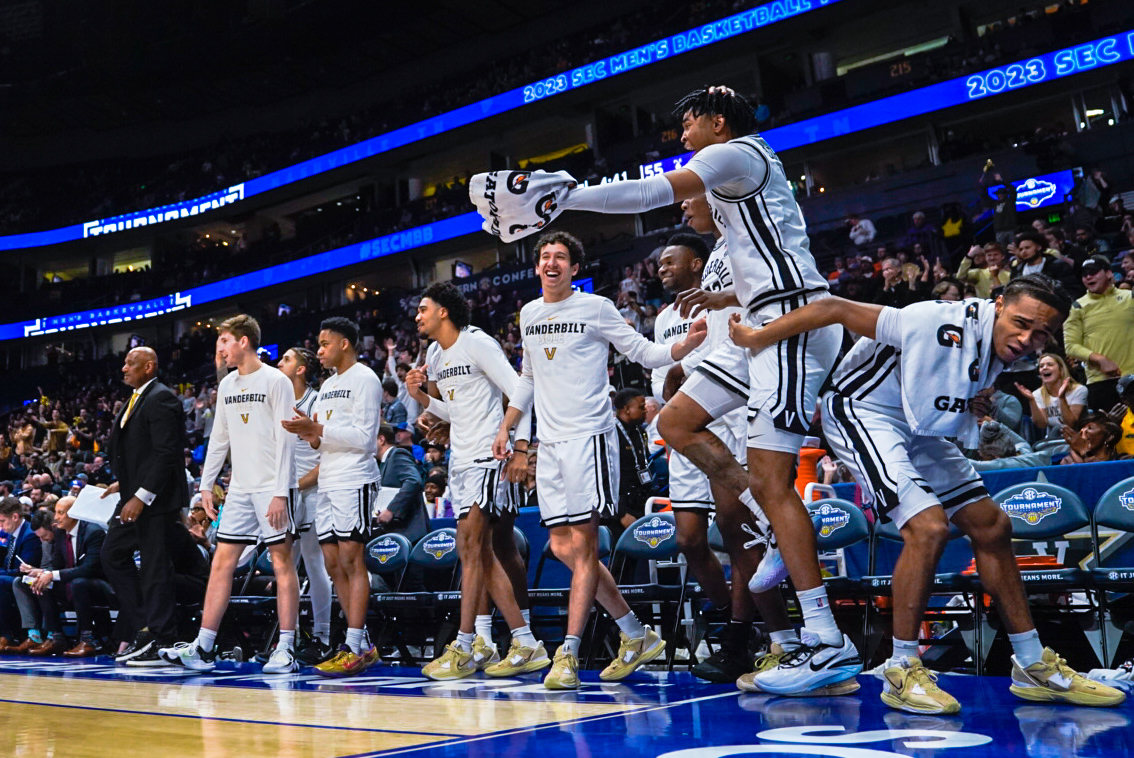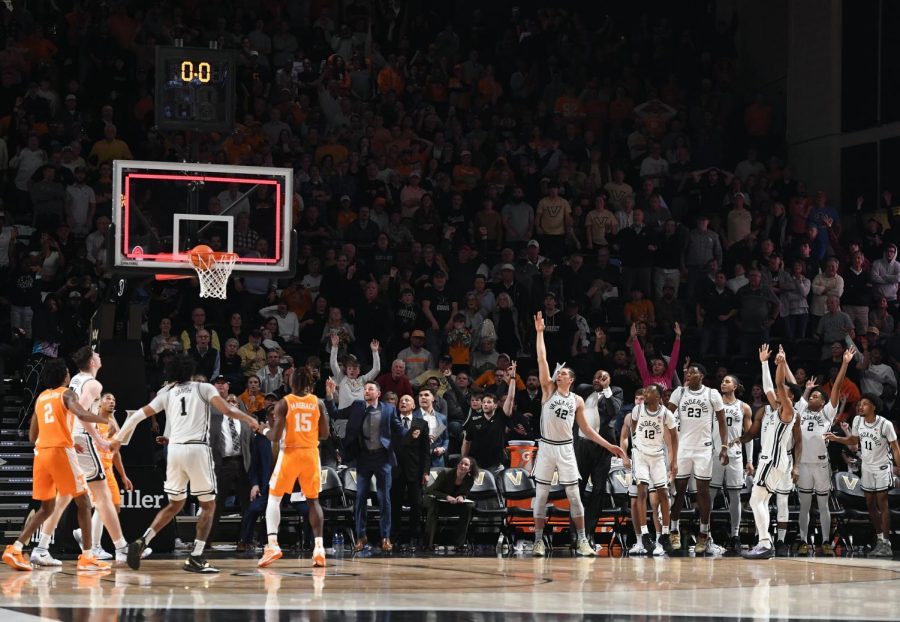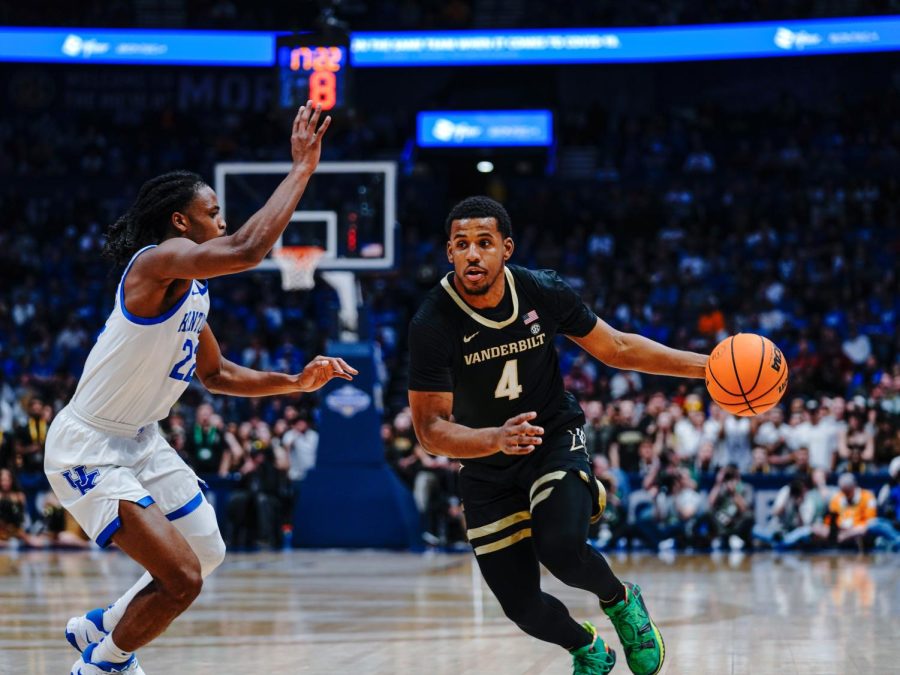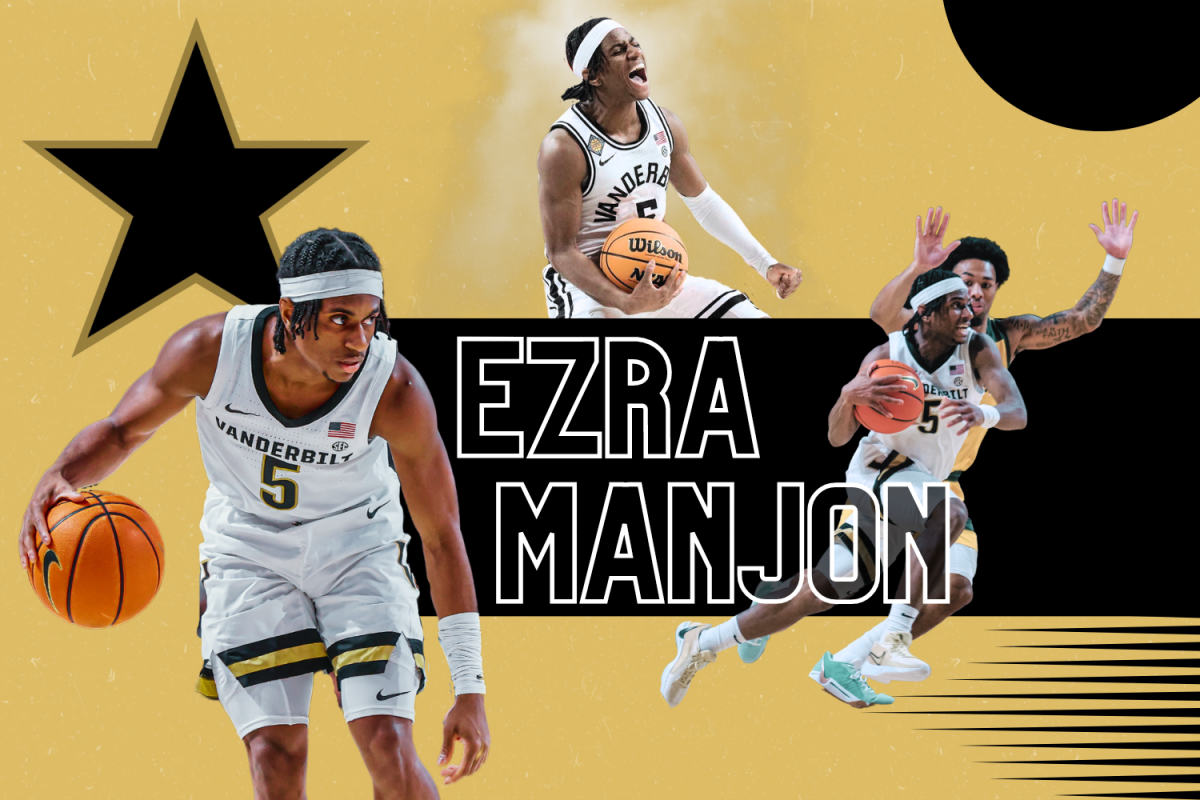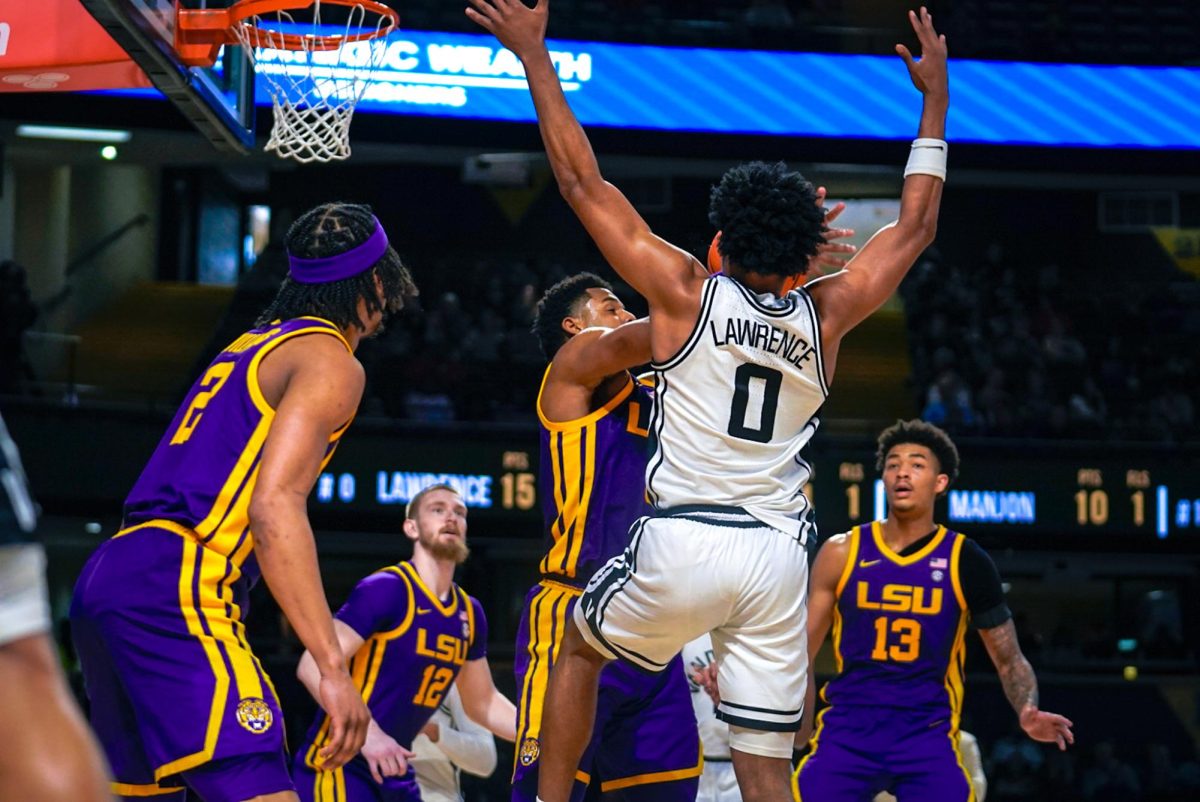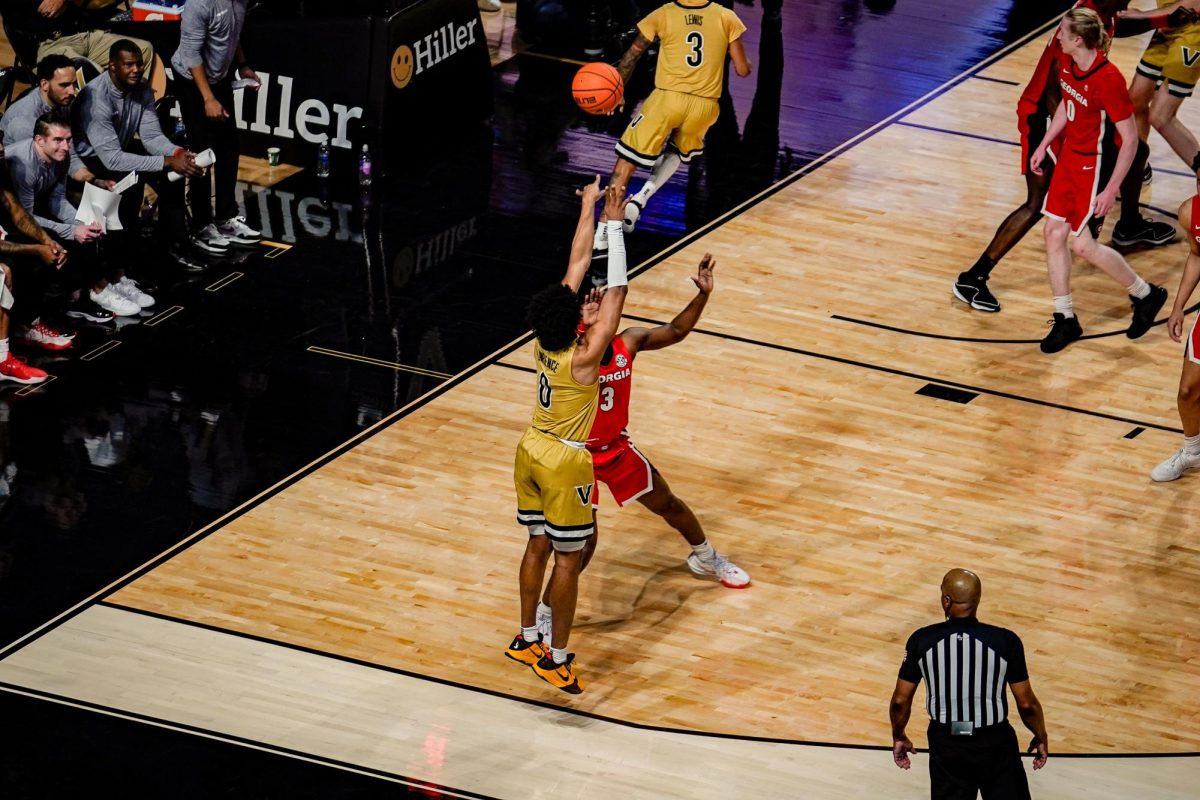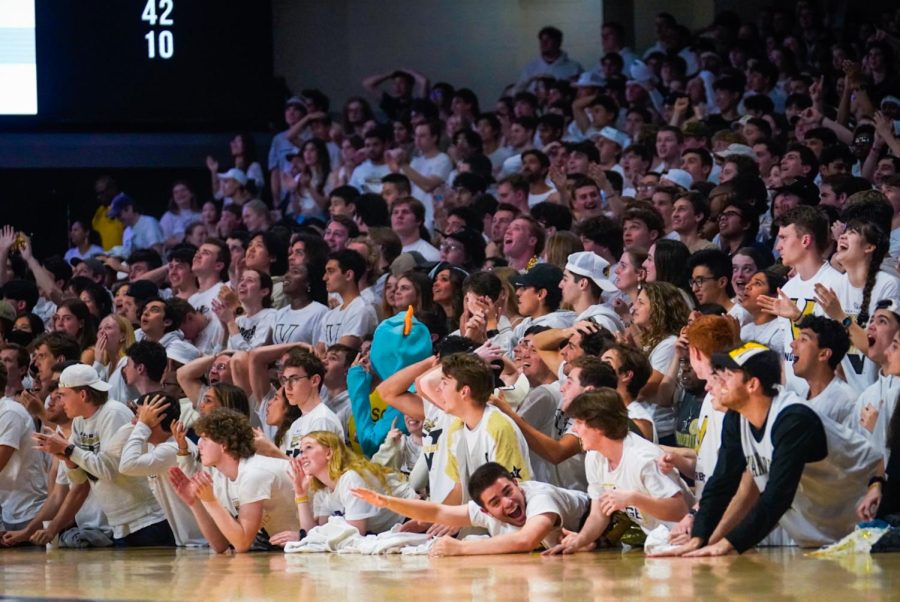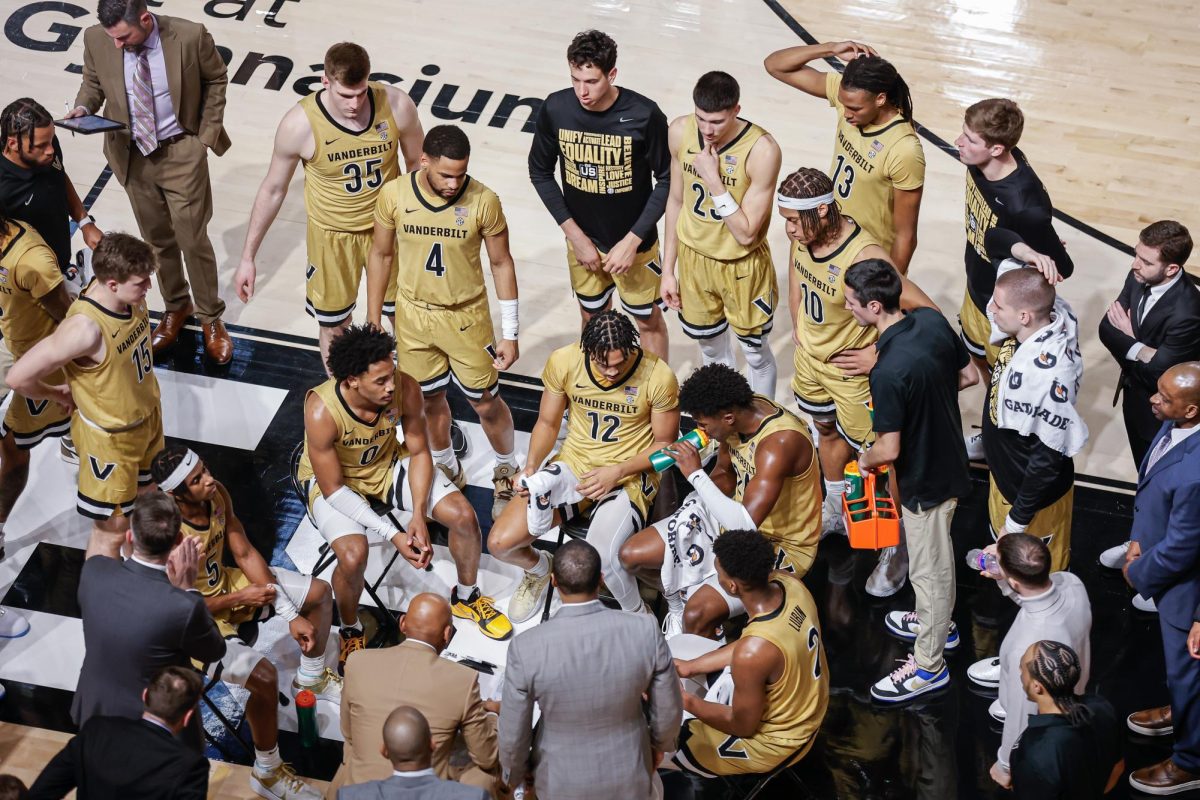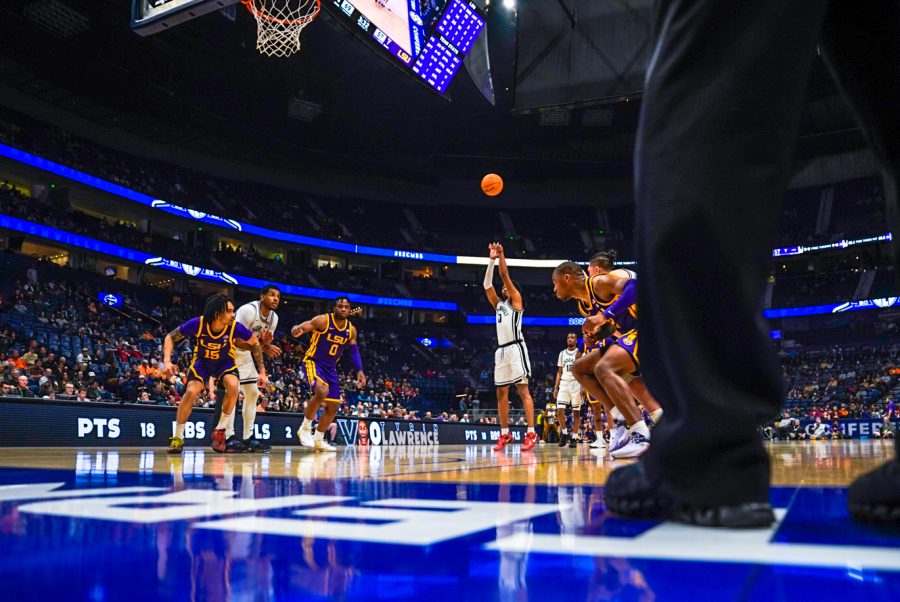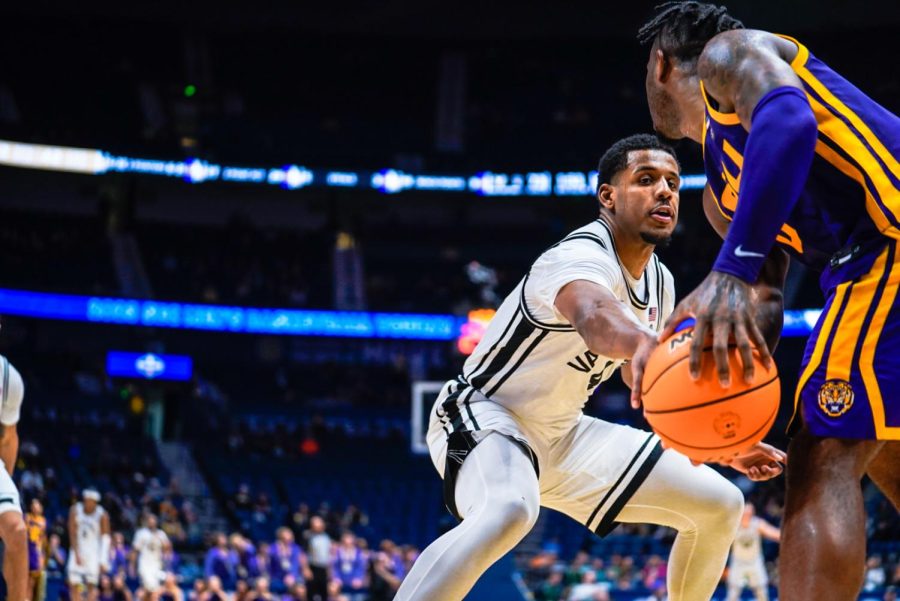Vanderbilt Men’s Basketball did something in the 2022-23 season that many in these parts thought had gone extinct, been erased, reduced to a relic of the past.
They brought back Memorial Magic.
And that magic came in droves on West End over the past couple of months.
Whether it was buzzer beaters against Tennessee, Auburn and Michigan or thrillers against Arkansas, Kentucky (twice) or Mississippi State, Vanderbilt Men’s Basketball was nothing if not entertaining in Jerry Stackhouse’s fourth year at the helm.
Tabbed to finish 12th in the SEC in the preseason, the Commodores exceeded even the most bullish expectations en route to a top-4 finish in the league. Stackhouse won SEC Co-Coach of the Year and Liam Robbins earned SEC Defensive Player of the Year. When Robbins went down, the guard trio of Ezra Manjon, Tyrin Lawrence and Jordan Wright led Vanderbilt to a 5-2 record in March, including an appearance in the SEC Tournament semifinals.
This season will be remembered as much for its infamous bumps and bruises as its triumphant highs, though.
That’s what made it so special. Frankly, this season was shocking.
Many had left these Commodores for dead after an early season loss to Southern Miss of the Sun Belt Conference. A Dec. 9 loss to Grambling State, just two days after beating eventual-NCAA Tournament team Pittsburgh, caused even more to jump ship.
Almost two months later, a 57-point loss at Alabama felt like the nail in the coffin for this team. Those who stuck around after Southern Miss and Grambling turned to naysayers, myself included.
That’s when Vanderbilt ripped off an improbable stretch of 10 wins in 11 games. Along the way, the Commodores conquered demons left and right, playing their way onto the precipice of the NCAA Tournament.
Depending on who you asked, they should have been in (they should have been in).
Alas, the Selection Committee ultimately favored the NET over the eye test, and strength of schedule, and Vanderbilt was left on the outside looking in. As a No. 2 seed in the NIT, the Commodores still had a bit of magic left in the tank, reaching the tournament quarterfinals after overcoming a 9-point deficit in 58 seconds to vanquish Michigan.
Vanderbilt ultimately ran out of gas against UAB in the NIT quarterfinals, but that loss can’t take away what this group did in anyone’s minds.
For this group of Commodores, the ImprobaDores, if you will, wrestled awake a program that has been a sleeping giant for the better part of the last decade — dangerous, but dormant. They dusted off old Memorial Gymnasium and brought its spirit back to life for the first time in a long time.
Like any great tale, we laughed but also cried, this year. We had moments to forget (hibachi, anyone?) and moments we never will forget. We smiled a lot.
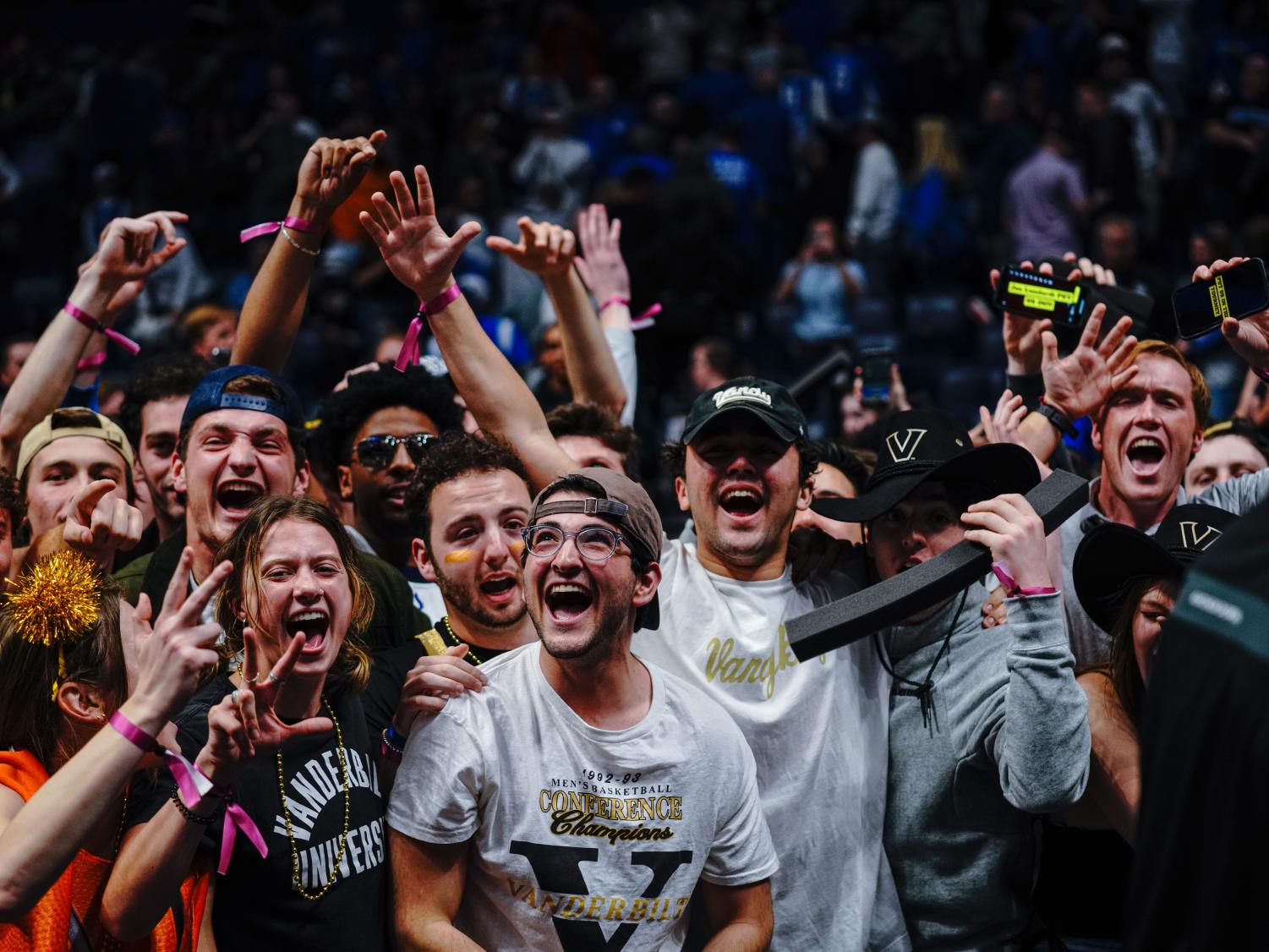
Consider for a second the “best shot” that the Commodores had this season. Tyrin Lawrence to beat Tennessee? Jordan Wright to down Kentucky? Ezra Manjon to stun Auburn or from halfcourt against Kentucky? It’s remarkable how many valid options from which there are to choose.
We have this team to thank for the joy they brought us over the past couple of months. Undoubtedly, they left this program in a better place than they found it.
And lastly, I have, you, the reader to thank — for following along on the ride. From early November to late March, it was a season I, and many of you will remember for a very long time. So, thanks for letting me watch alongside you.
Now, into our season’s end Memorial Minutes — a look back and a look ahead.
Corner Turned
Continuing on the complimentary tone, Vanderbilt’s 2022-23 campaign was overwhelmingly positive.
Let’s start in the win column. Vanderbilt won 22 games this season, 13 of which came in conference play. That’s the most wins overall for the program since 2012 and most in league play since 2016.
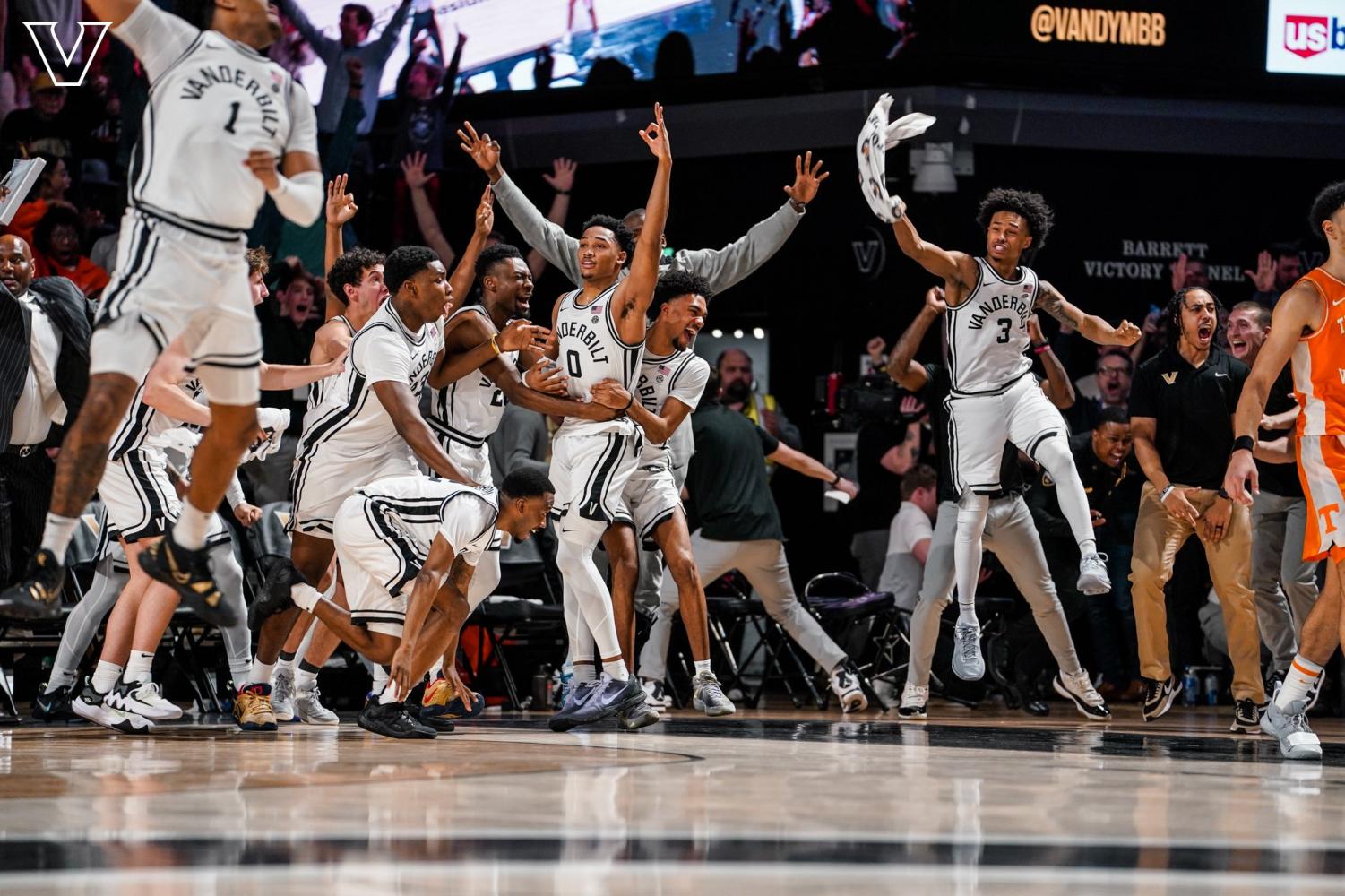
Year four marked a lot of “firsts” in the Stackhouse era. The Commodores conquered in-state rival Tennessee for the first time since 2016. They took down Kentucky at Rupp Arena for the first time since 2006, then later beat the Wildcats in the SEC Tournament quarterfinals. Vanderbilt beat both Auburn and Florida for the first time in Stackhouse’s tenure — marking a victory over every conference foe in the last four years. The Commodores made it out of the Wednesday night game (bottom 4 teams) and into the weekend game (top 4 teams) in the SEC Tournament for the first time under Stackhouse.
Statistically, this season featured the top offense Vanderbilt has had since 2018 (No. 29 in KenPom adjusted offensive efficiency) and the best of the Stackhouse era. That offense had one of the five best offensive performances the team has had since 2002 in a 97-84 win over Sweet 16 finalist Arkansas (141.1 rating).
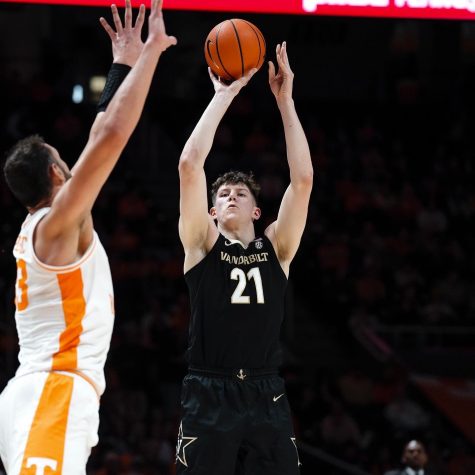
Robbins won the aforementioned SEC Defensive Player of the Year award (more on that later), but younger players blossomed as well.
Nobody was more improved than Lawrence who developed his game in just about every facet this season. The junior wing jumped from 3.8 points per game last season to 13.1 points per game this year on more efficient shooting from the field and a 16-point uptick in three-point percentage.
Freshmen Colin Smith and Paul Lewis had their moments as well, providing key sparks in SEC Tournament wins over LSU and Kentucky.
Stackhouse continued to showcase his penchant for development, especially of wing players similar to himself, and ultimately created a greater sum of Vanderbilt than its individual parts. Though the Commodores fell short of their goal of making the NCAA Tournament, almost no one in the preseason had them making it as far as they did.
All in all, Stackhouse’s team turned a corner as a program, proving they can dance with the big boys in SEC play. Because of that progress, next year’s expectation will be an NCAA Tournament appearance.
Thank You, Seniors
You didn’t think I’d let you off without any more thank you’s, did you? I’m emotional.
In all seriousness, Stackhouse has his seniors to thank for much of the success his program saw this year.
Starting with the big man in the middle, Robbins proved he was a force to be reckoned with in his final year of college eligibility and was rewarded by being named Defensive Player of the Year and First Team All-SEC.
Robbins averaged 15 points, 6.8 rebounds and 3.2 blocks per game in 26 appearances this season. During Vanderbilt’s 6-1 February run, he played like one of the best players not only in the conference but in the entire country.
Check this statline for size: In February, Robbins averaged 22 points, 10.1 rebounds and 4.6 blocks. His magnum opus came in a Feb. 11 road date in Gainesville in which he dropped 32 points, 10 rebounds and 4 blocks on Florida center Colin Castleton, a fellow All-SEC first team honoree.
Though Robbins eventually went down with a season-ending injury against Kentucky on March 1, Stackhouse’s other seniors were there to pick up the slack.
Jordan Wright battled through injuries and ups and downs in his fourth year on West End, but turned in his best basketball late when Vanderbilt absolutely needed him to do so. He sank Kentucky that March 1 night with a turnaround jumper, notching a season-high 23 points immediately after Robbins went down. His hot play extended through the end of the season as he averaged 14.9 points in the eight games Vanderbilt played without Robbins. More than anything, Wright stepped up as emotional leader for a team that needed an emotional run to propel them.
“There’s no secret about it, I don’t think he had his best season this year, there were some ups and downs,” Stackhouse said of Wright after the Texas A&M loss. “But at the end of the day when we needed him the most, he stepped up, and he was the leader and the Vanderbilt man I expected him to be.”
Then, there’s the pint-sized point guard Ezra Manjon, who turned in a fantastic final three months of the season. Combined with Lawrence and Wright, Manjon formed a three-headed monster in the backcourt that no opponents wanted to face down the stretch. The UC Davis transfer hung 25 points on Kentucky in the SEC Tournament quarterfinals and had a memorable game-winning layup against Auburn. Manjon has confirmed he will use his extra year of COVID-19 eligibility and return to the Black and Gold next season, as well Quentin Millora-Brown who was valiant in relief of Robbins late in the season.
Lastly, Emmanuel Ansong was a bit of an enigma for Vanderbilt since the moment he joined the team just days before the program’s trip to Europe. Ansong’s effort was never in question, though, and perhaps no game better exemplified that than his last against UAB. The fifth-year senior scored 6 points, grabbed 9 rebounds and had two massive blocks to keep the Commodores in the game against the Blazers on Wednesday.
Transfer Portalpalooza
With Robbins and Ansong (and junior Myles Stute) officially heading out the door, attention turns to how Vanderbilt will recreate its roster over the next few weeks in the transfer portal and high school recruiting scene. In today’s era of college hoops that process began as soon as the clock hit triple zeroes against UAB on Wednesday.
Wright is the lone senior whose status is still up in the air with Manjon and Millora-Brown confirmed to return. Wright said on Wednesday night that he will talk with Stackhouse and his family over the coming days before making a decision on his future.
Things get much more complicated from there.
While it will be a priority for Vanderbilt to retain everyone on its current roster for next year’s team, Lawrence’s potential return looms especially large.
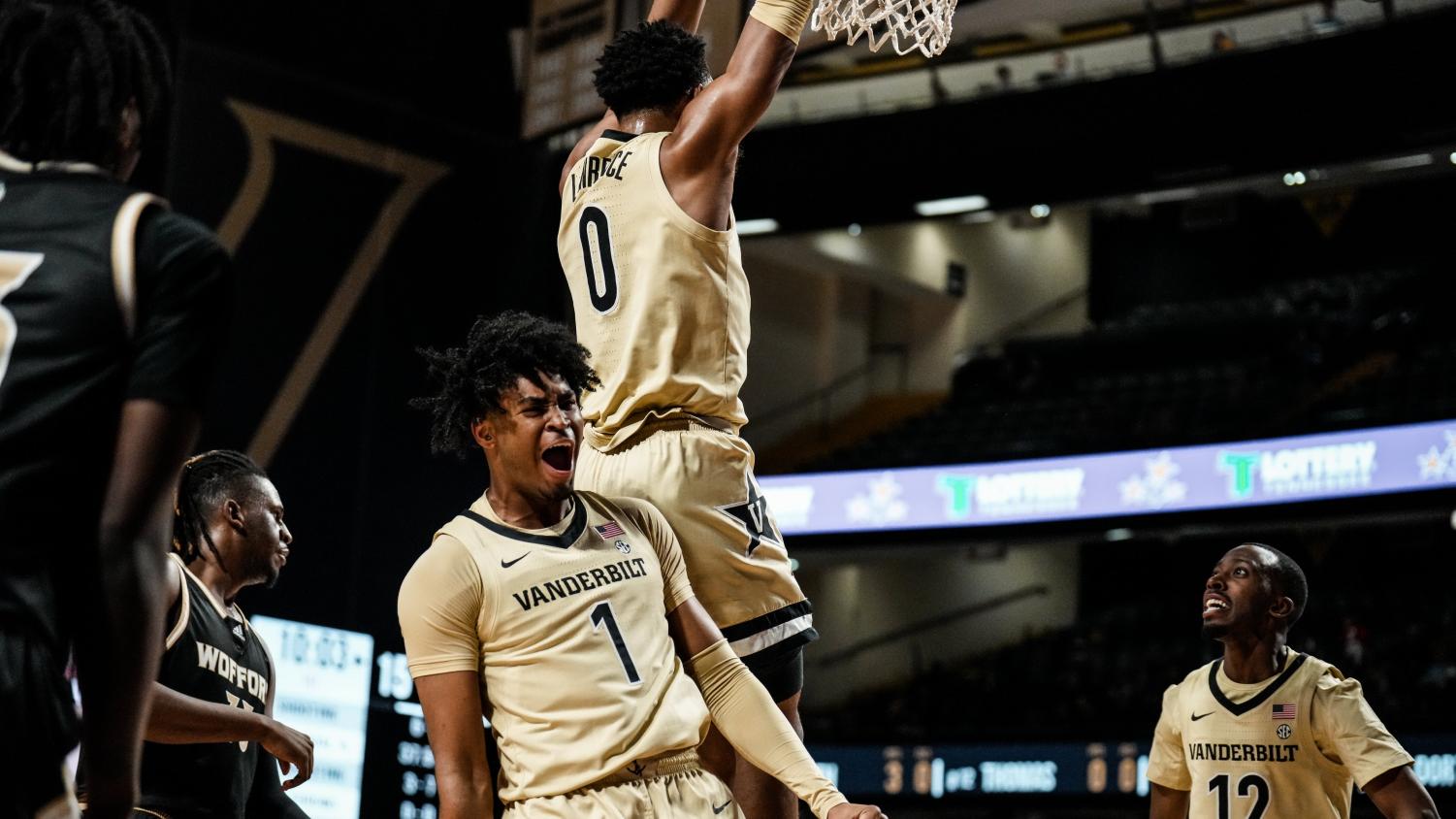
Lawrence’s junior leap certainly garnered the attention of those outside of Vanderbilt and in the NIL era, he will be poised to cash in off his performance this year. Whether or not those funds come via Vanderbilt’s NIL collectives is the big question. Should Lawrence return for his senior season on West End, Vanderbilt would arguably have the top backcourt in the league come November with Lawrence likely earning first team all-SEC votes in the preseason.
Colin Smith is another piece the Commodores must keep in Nashville. The former four-star recruit flashed moments of brilliance as a two-way forward in his freshman year, making 16 starts. Smith possesses elite 3-and-D potential with a capability to create off the bounce as well — an archetype that Stackhouse has developed extremely well during his tenure (see: Nesmith, Aaron).
Elsewhere in the freshman class, Vanderbilt will work to retain guards Paul Lewis and Noah Shelby and forwards Malik Dia and Lee Dort. Lewis played the most of the group, though all four saw inconsistent playing time throughout the year; thus, each of their probabilities to return is unknown.
Nonetheless, it is too early to speculate on any individual Commodores before Stackhouse has his exit meetings with each player. How the roster attrition shakes out will be the defining storyline of the offseason, but Vanderbilt will have a chance to go on offense in the portal as well.
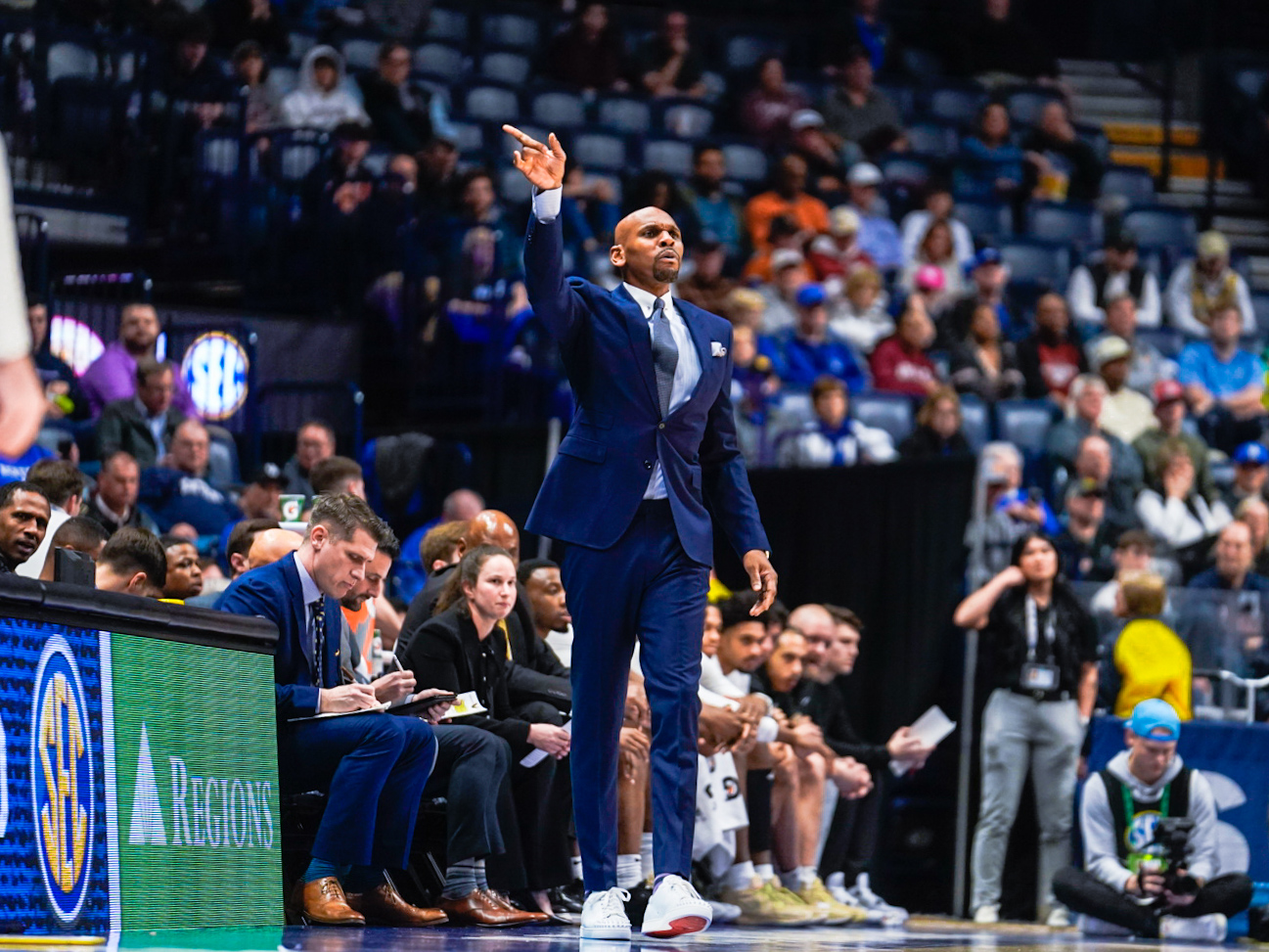
Stackhouse mentioned that Vanderbilt will be “as active as anyone” in the portal trying to find the pieces to fit its 2023-24 puzzle. In order, I’d rank Vanderbilt’s wishlist as a starting capable big man, a two-way wing with shooting ability and a backup guard or forward.
The Commodores have made the final 10 for Wofford transfer BJ Mack, and Kinston, North Carolina, (Stackhouse’s hometown) natives Damian Dunn and Dontrez Styles entered the portal from Temple and UNC, respectively. As postseason tournaments come to a close over the next few weeks, many more players will enter the portal, and Vanderbilt’s plans will begin to crystallize.
From the high school ranks, Vanderbilt will welcome the No. 39 ranked class in the country, according to 247Sports. Isaiah West (point guard), JQ Roberts (forward) and Carter Lang (center) fill out the group.
Stackhouse and his staff will look to build off this season’s momentum to take the next step as a program and make a run to the NCAA Tournament in 2024. With a memorable, but bittersweet, season in the rearview, that process begins now.


